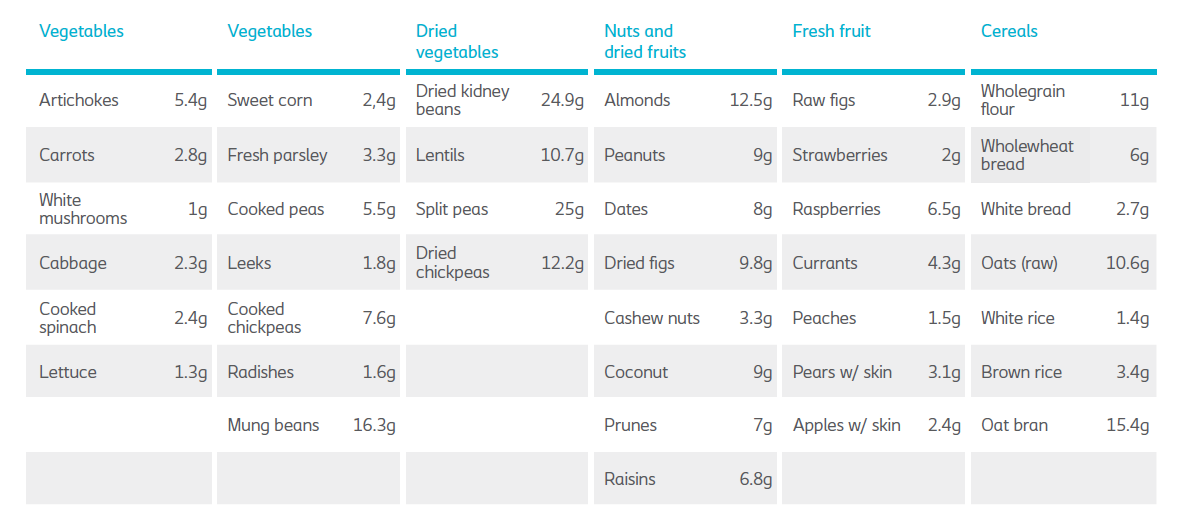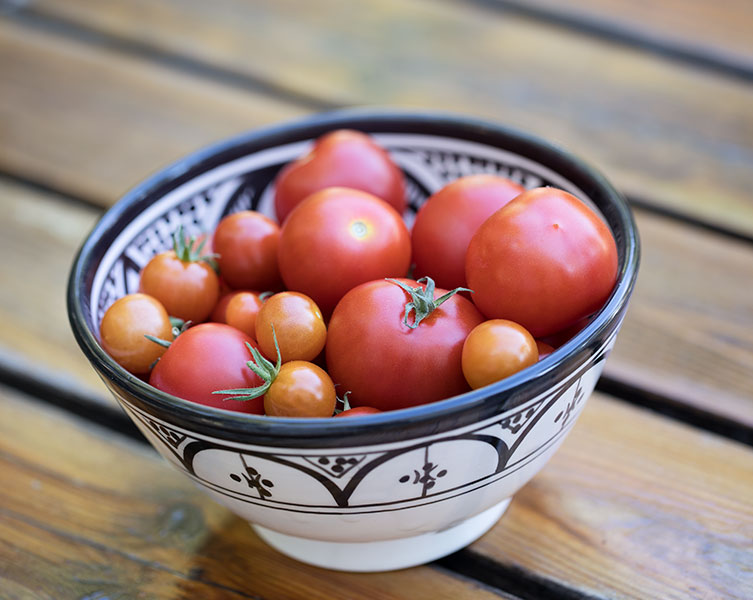How fluid and fiber can help you manage constipation
The following dietary information is provided for general guidance. Always seek guidance from your healthcare provider before making any dietary changes.
A balanced diet is one that includes portions from all the main food groups, so your body get the nutrients it needs to function correctly. However, if you’re suffering from constipation, you might need to pay special attention to fiber and hydration. The combination of a fiber-rich diet and good hydration may have a positive effect on constipation by altering your stool consistency.
Unlike other food components, such as fats and proteins, fiber can’t be digested or absorbed by your body. Instead, it passes relatively intact through your digestive system. This increases the volume of your stool (which in turn stimulates contractions in the colon) and helps your stool to retain water, making it softer and easier to pass.
Be aware that you should increase fiber in your diet gradually over a period of a few weeks. This allows the natural bacteria in your digestive system to adjust to the change. Adding too much fiber too quickly can lead to intestinal gas, abdominal bloating, cramping and diarrhea.1,2,3
How much fiber should you eat?
Fiber recommendations can differ based on gender, age and medical conditions. For many, finding the right amount of fiber will be a trial and error process. It’s important you discuss any changes in your fiber intake with your healthcare professional.
General recommendations in the US indicate that an adult should aim to consume 25-30 grams of fiber every day. A fiber intake of below 15 grams per day can be associated with constipation. There is some evidence that for patients with neurogenic bowel dysfunction, fiber intake above 20 grams per day can lead to prolonged transit time and worsen constipation.4 If you belong to this patient group, it’s important you seek guidance from your healthcare professional regarding the right amount of fiber for you.
Where do I find good fiber?
Fiber is found in food of plant origin such as fruit, vegetables (lentils and peas are especially rich), beans, seeds, wholegrain cereal and grains (wholegrain rice, pasta, bread, oats, and wheat). This table indicates the fiber content per 100 grams of food.5

Maintain fluid intake
Some types of fiber retain water in your bowel, forming a gel-like material that makes your stool smoother and easier to pass. That’s why it’s important to maintain a sufficient fluid intake when eating a fiber-rich diet.3
1. Bernardi, M., Fedullo, A., Bernardi, E., Munzi, D., Peluso, I., Myers, J., Lista, F. and Sciarra, T., 2020. Diet in neurogenic bowel management: A viewpoint on spinal cord injury. World Journal of Gastroenterology, 26(20), pp.2479-2497.
2. Bigford, G. and Nash, MS., 2017. Nutritional Health Considerations for Persons with Spinal Cord Injury. Topics in Spinal Cord Injury Rehabilitation, 23(3), pp.188-206.
3. British Nutrition Foundation 2018. Dietary fibre. Accessed at: https://www.nutrition.org.uk/healthyliving/basics/fibre.html
4. Academy of Nutrition and Dietetics 2021. Recommendations Summary. SCI: Fiber and Neurogenic Bowel. Accessed at: https://www.andeal.org/template.cfm?template=guide_summary&key=2282.
5. Academy of Nutrition and Dietetics; Spinal Cord Injury (SCI) Evidence-Based Nutrition Practice Guideline. Accessed at: https://jandonline.org/article/S2212-2672(14)00744-8/fulltext
Information from Coloplast® Care is for educational purposes only. It is not intended to substitute for professional medical advice and should not be interpreted to contain treatment recommendations. You should rely on the healthcare professional who knows your individual history for personal medical advice and diagnosis. Prior to use refer to product labeling for complete product instructions for use, contraindications, warnings and precautions.
Indication: The Peristeen® Plus Transanal Irrigation System is intended to instill water into the colon through a rectal catheter, which incorporates an inflatable balloon, inserted into the rectum to promote evacuation of the contents of the lower colon. The Peristeen Plus Transanal Irrigation System is indicated for use by children (2 years - <12 years old), adolescent (12 years - < 18 years old), transitional adolescent (18 - <21 years old) and adult patients with neurogenic bowel dysfunction who suffer from fecal incontinence, chronic constipation, and/or time-consuming bowel management procedures.
Contraindications: Peristeen Plus Transanal Irrigation must not be used in the following situations: known anal or colorectal stenosis, colorectal cancer (active/recurrent), radiotherapy to the pelvis, and recent abdomino-perineal surgery, active inflammatory bowel disease, acute diverticulitis, severe diverticulitis, previous diverticulitis and diverticular abscess, chronic symptomatic diverticular disease, within 3 months of abdominal, anal or colorectal surgery, within 4 weeks of endoscopic polypectomy, recent colonic biopsy, recent endoscopic mucosal resection (EMR) and recent endoscopic sub-mucosal dissection (ESD), severe autonomic dysreflexia, ischemic colitis, during Spinal Cord Shock Phase, complex diverticular disease, in patients who are pregnant and have not used the system before*. Since the list is not exhaustive, the healthcare professional should always consider individual patient factors as well. *If the patient is pregnant and has never used transanal irrigation before, they should not start the irrigation procedure during pregnancy.
Warnings: Peristeen Plus Transanal irrigation procedure should always be carried out with caution. Bowel perforation is an extremely rare, but serious and potentially lethal, complication to transanal irrigation and will require immediate admission to a hospital, often requiring surgery. See the device manual for complete user instructions, contraindications, warnings, precautions, and potential complications/adverse events. For further information, call Coloplast Corp at 1-855-605-7594 or consult the company website at www.coloplast.us. Caution: Federal law restricts this device to sale by or on the order of a physician.



